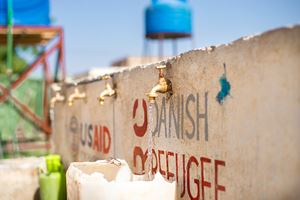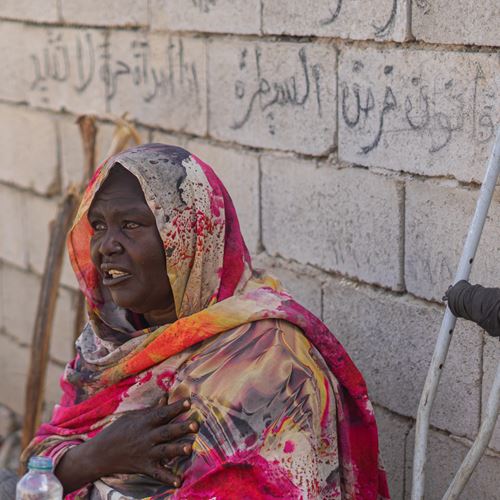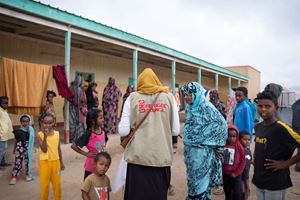
Sudan’s Internally Displaced: Samia’s Journey
Samia is one of the millions of internally displaced persons (IDPs) in Sudan. In January 2025, DRC interviewed several Sudanese IDPs about their journeys of displacement and lives in the shelters. This is Samia’s story.

Before the conflict, Samia lived a simple but stable life in a small village in southeastern Sennar state. Her days were spent in the bustling market, selling vegetables and charcoal fuel, her family's primary income source.
Every hard-earned penny went toward securing a better future for her daughter, who had made it to her second year at university. Her son, however, had been forced to leave school at a young age to help support the family, sacrificing his education so his sister could continue hers. Then, the war came—and with it, everything changed.
One day, while Samia was at the market, her daughter rushed in with urgent news: some relatives were preparing to flee on a large truck. The reality of displacement hit her instantly. Her daughter hurried home to gather their belongings while Samia, leaning on her cane, set out to negotiate with the truck driver.
The journey to Al-Gedaref, their next destination, came at a steep price—60,000 Sudanese pounds per person. Samia did not have the money, but she was determined to get her daughter to safety. After some discussion, the driver agreed to let them travel on credit, with a relative sending payment via "Bankak" upon their arrival.
A Harrowing Journey to an Uncertain Future
The truck rumbled through the dusty roads until it reached Al-Gedaref, where Samia and her daughter spent three days relying on the kindness of others. Samia contacted her son who quickly transferred the fare to the driver. With that obstacle behind them, they set out for Port Sudan, a city overwhelmed with displaced families searching for refuge.
At their first stop, a relative took them in. However, as more people arrived, the tiny home became too crowded to accommodate them all. Once again, Samia and her daughter had to move—this time to Red Sea School, which had been repurposed as a shelter for displaced families. Here, they obtained documents recognizing their status as internally displaced persons (IDPs).

Samia, being interviewed by DRC at an IDP settlement in Al Eskan, Sudan PHOTO: Omar Tariq // DRC
We are living by the grace of God alone
/ Samia, internally displaced in Al Eskan, Sudan
Life in the shelter: struggles and relief
The final stop on their journey was a shelter, where they found temporary safety. When they arrived, there was nothing — no mattresses, plastic sheets, or essentials. The struggle for survival became even more intense. Food and water were scarce, and each day was a battle against hunger and exhaustion.
Life for Samia remained unpredictable. Her son found occasional work, but some days, there was no money. They survived by boiling water to drink and relying on whatever little they could gather. Their situation is bleak, with no safe end in sight.
In December 2024, the total number of internally displaced families in the Al-Hayashan residential compounds was 288. As of February 2025, the number of displaced families in Al-Hayashan area has increased to approximately 1,800. DRC has been rolling out its Multi-Purpose Cash Assistance (MPCA) program in Sudan, which have played a crucial role in supporting displaced women and girls, providing them with financial resources to access productive assets and essential services.
According to OCHA, Sudan's 2025 humanitarian response plan is severely underfunded, reaching only 10 percent. The current funding situation makes it difficult to adequately support IDPs like Samia, who, on top of displacement, face significant protection risks. It means that the shelters are not the end of the road for the difficulties faced by IDPs; precarity and hunger continue. With the conflict entering its third year, the need for sustained international support, robust humanitarian coordination, and unrelenting protection advocacy is more urgent than ever.

